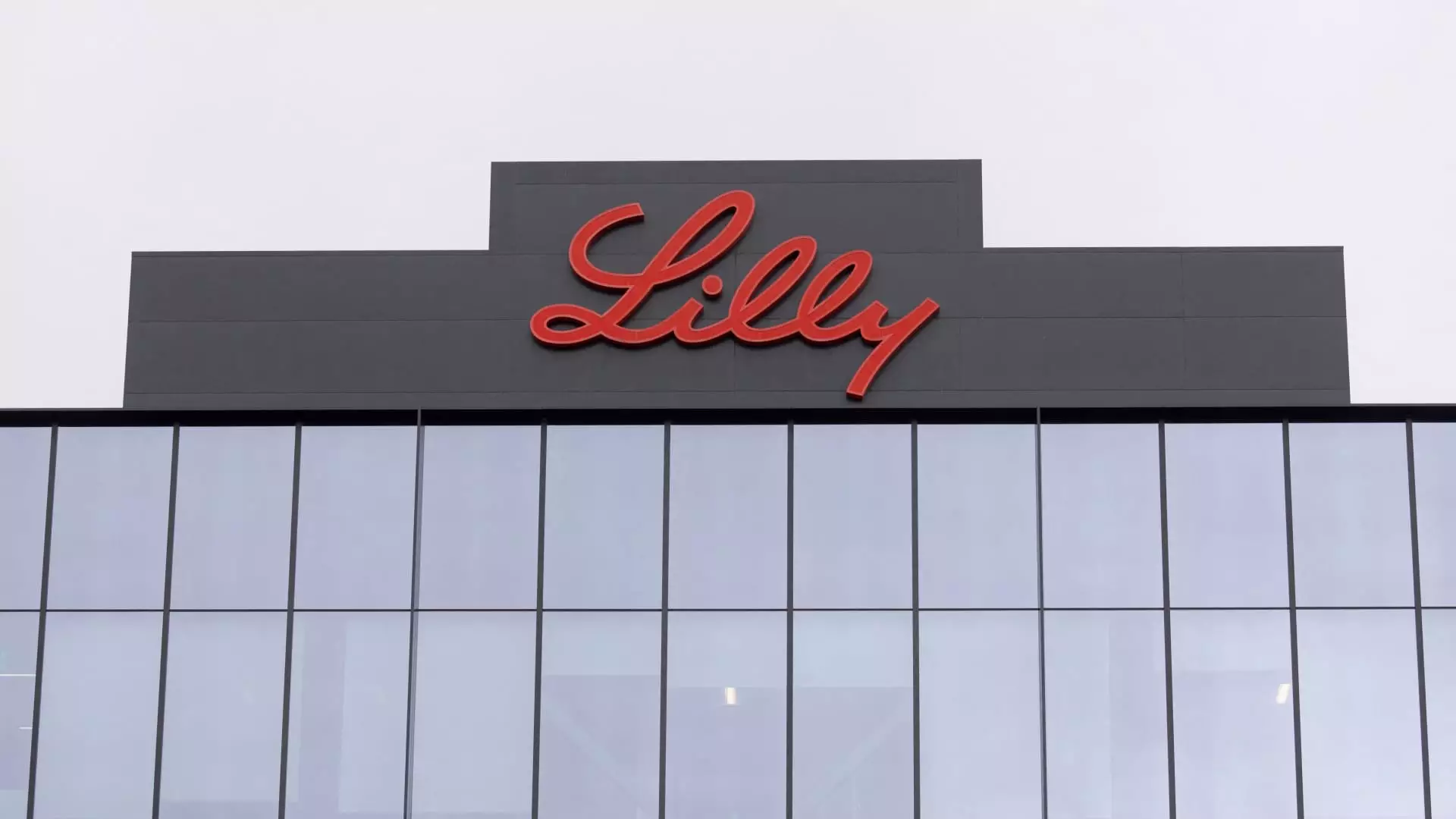Eli Lilly and Company has recently come under scrutiny following a disappointing third-quarter financial report that startled investors and analysts alike. The pharmaceutical giant, which has made notable strides in the diabetes and obesity treatment markets, found itself falling short of expectations in both profit and revenue. This article will delve into the various factors contributing to Eli Lilly’s lackluster performance, the implications for its future, and how market dynamics may shift in response.
In the latest earnings report, Eli Lilly detailed adjusted earnings per share of $1.18, falling short of the expected $1.47. Revenue for the quarter was reported at $11.44 billion, significantly below the projected $12.11 billion. The company’s stock plummeted more than 12% following this revelation, casting doubts on its current trajectory. Eli Lilly has subsequently slashed its full-year adjusted profit guidance, now estimating earnings between $13.02 and $13.52 per share, which is a significant reduction from the earlier forecast of $16.10 to $16.60 per share.
At the core of these disappointing results lies the underperformance of Eli Lilly’s flagship medications, particularly the weight loss drug Zepbound and the diabetes treatment Mounjaro. Analysts had high hopes for Zepbound, particularly after its introduction to the U.S. market nearly a year ago; however, it managed only $1.26 billion in sales during the quarter, a far cry from expectations of $1.76 billion.
The sales figures reflect a broader trend impacting Eli Lilly’s drugs. While Mounjaro did show some growth, doubling its revenue year-over-year to $3.11 billion, it still fell shy of analyst expectations of $3.77 billion. Eli Lilly’s CEO, David Ricks, highlighted that the disappointing numbers stemmed in part from reduced inventory levels among wholesalers rather than issues of supply, which have plagued the industry for the past year.
Despite the shortage issues easing, with the FDA indicating that all doses of Zepbound and Mounjaro are now available in the U.S., this has not translated into solid sales figures. Ricks also mentioned that the company’s plans for marketing Zepbound were postponed due to customer service levels, as they did not want to exacerbate frustrations arising from supply constraints.
Another significant factor affecting Eli Lilly’s profitability was a whopping $2.8 billion charge incurred in the third quarter, associated with its acquisition of Morphic Holding, a company specializing in treatments for bowel diseases. This substantial charge has played a central role in the company’s revised outlook, demonstrating how strategic acquisitions can sometimes negatively impact the bottom line in the short term.
Additionally, Eli Lilly has lowered the high end of its revenue guidance for the year from $46.6 billion to a new target range between $45.4 billion and $46 billion. These adjustments illustrate the challenges the company is currently facing as it works to stabilize its position in the highly competitive pharmaceutical market.
The report also comes at a time when competition from rival companies, particularly Novo Nordisk, is intensifying. The market for diabetes and obesity treatments has skyrocketed in demand, and both Eli Lilly and Novo Nordisk are pouring billions into expanding their manufacturing capabilities. Despite these investments, Eli Lilly continues to experience challenges meeting market demand for its incretin drugs.
Furthermore, compounding pharmacies are increasingly becoming a point of contention; they produce customized medications that sometimes serve as cheaper alternatives to branded drugs. As Eli Lilly and its competitors navigate these complex market dynamics, there have been calls from compounding pharmacies for the FDA to revisit its decisions regarding drug shortages, highlighting the ongoing turbulence in the pharmaceutical landscape.
Looking ahead, Eli Lilly is optimistic about ramping up production capabilities, with plans to increase manufacturing output by 50% in the latter half of 2024 compared to the same period last year. The company also anticipates further expansion in manufacturing capacity in the upcoming years. However, as Ricks noted, the timeline for these improvements will be critical in determining how quickly Eli Lilly can reclaim its market position.
Additionally, the forthcoming marketing initiatives for Zepbound may prove to be pivotal. With plans to initiate advertising campaigns in November, the company hopes to reignite consumer interest in its products, ultimately aiming to turn its sales trajectory around.
Eli Lilly faces a period of uncertainty marked by disappointing financial results and competitive pressures. The adjustments in profit guidance and revenue outlook underscore the challenges the company encounters in meeting market expectations. While the ambition to recover in the latter part of 2024 may be promising, it is clear that Eli Lilly’s next steps will be crucial in navigating the complexities of the pharmaceutical market. The coming months will reveal whether the company can capitalize on its strengths to recover momentum or if it will continue to face headwinds in a rapidly evolving landscape.

